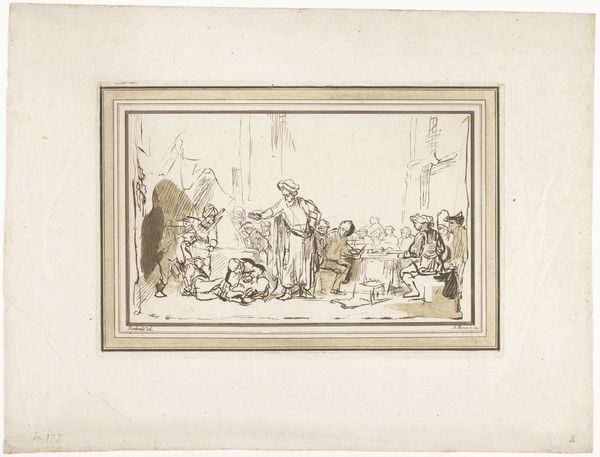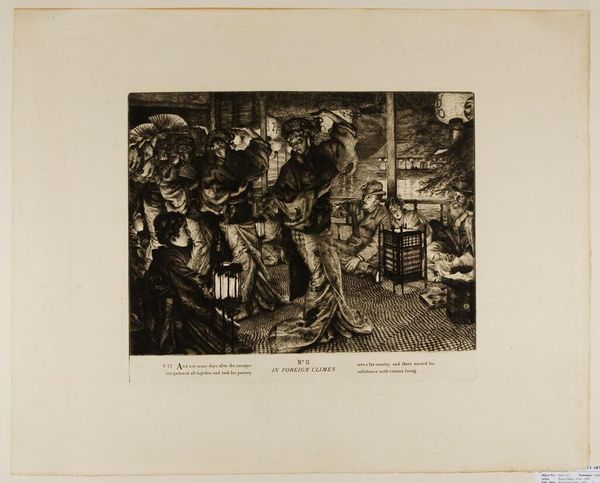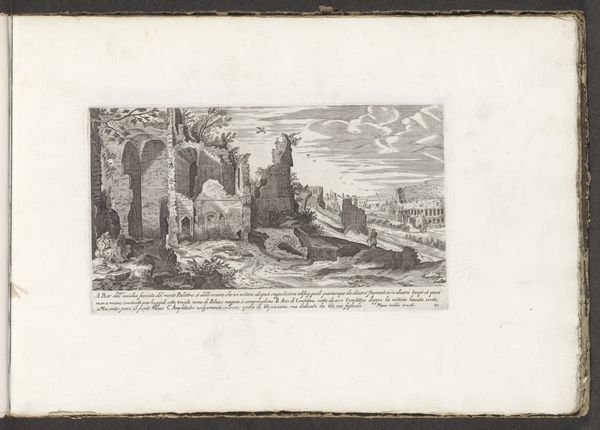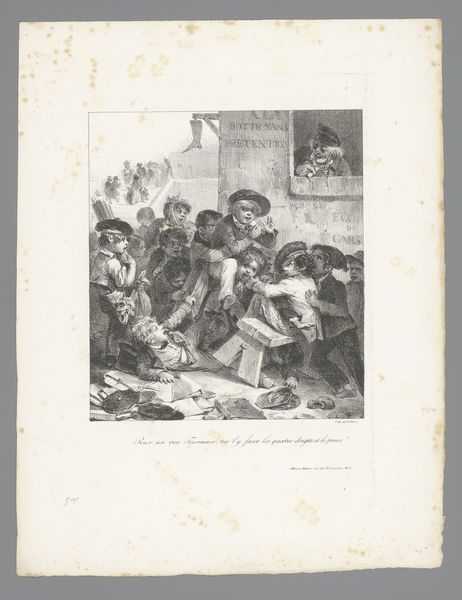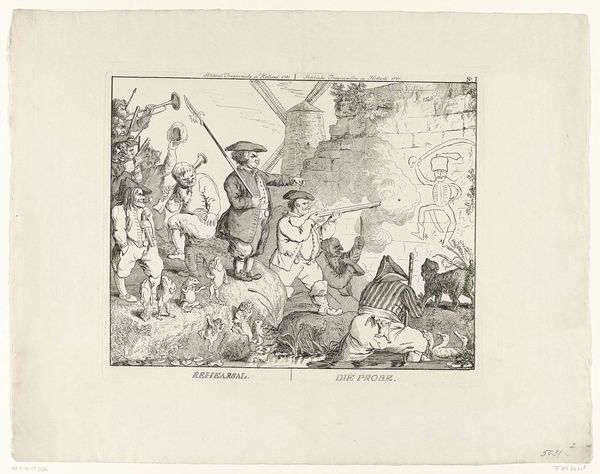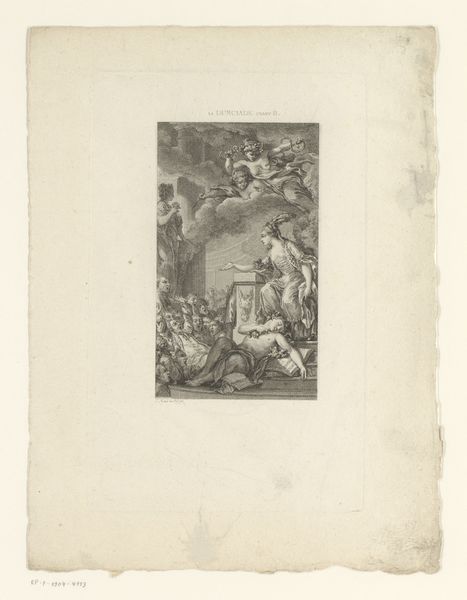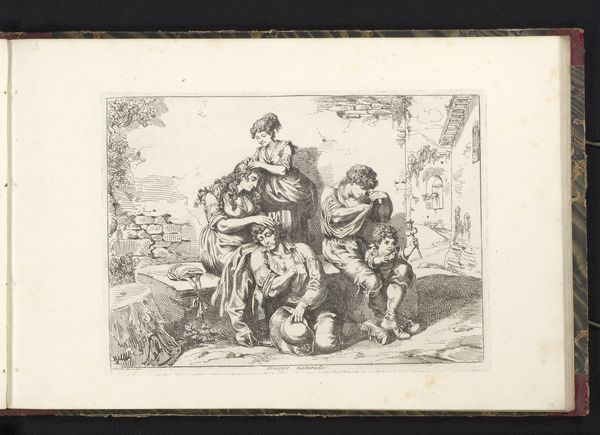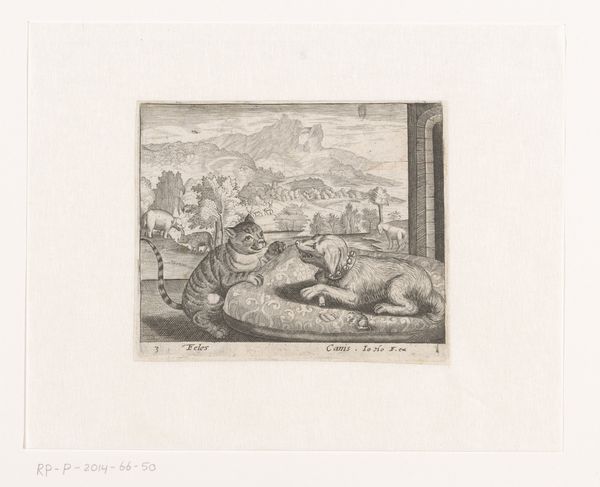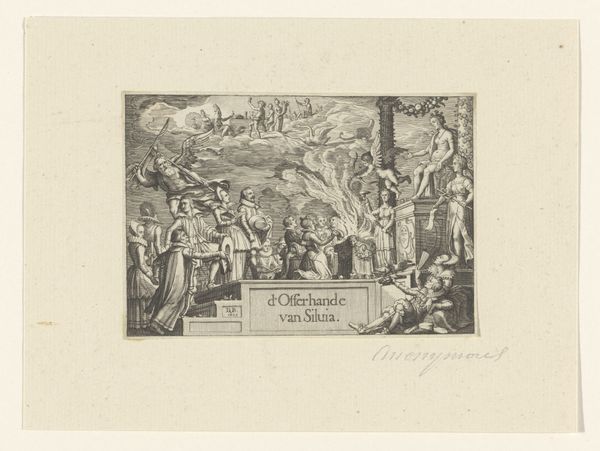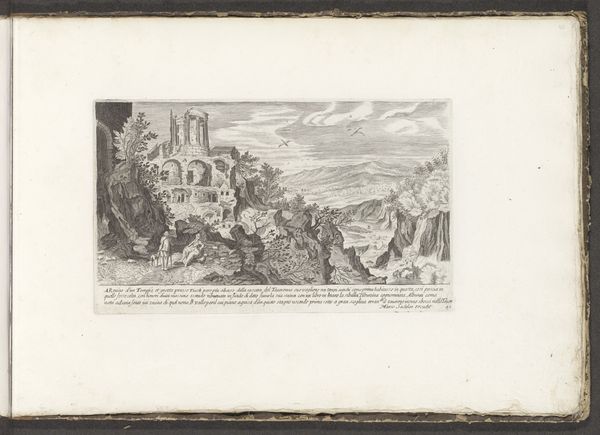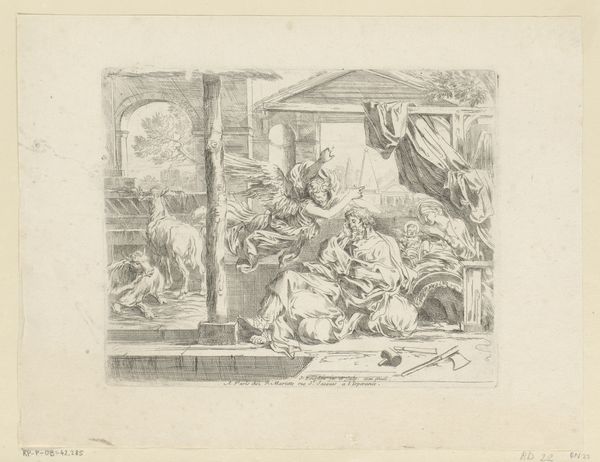
#
aged paper
#
toned paper
#
ink paper printed
#
river
#
personal sketchbook
#
pen-ink sketch
#
ink colored
#
sketchbook drawing
#
watercolour illustration
#
sketchbook art
#
watercolor
Dimensions: height 158 mm, width 267 mm
Copyright: Rijks Museum: Open Domain
Curator: This pen and ink sketch, dating back to 1680, captures "Gezicht op de Tiber bij Tivoli," or "View of the Tiber near Tivoli". The artwork uses watercolour on toned paper to depict this italian landscape. What strikes you first about it? Editor: The immediate feeling is one of Romantic melancholy, isn't it? The scene presents a harmonious unity between nature and ancient construction with the wild, rushing waters juxtaposed against what looks like ruins evokes a sense of history and the sublime power of nature's permanence. Curator: Precisely. The scene speaks to a longing for a bygone era, a sentiment pervasive during the period it was created, and perhaps influenced by its social functions. Travel was broadening during the time, the market for landscapes developed. Landscape imagery offered an opportunity to reflect cultural values associated with nature and civilization. Editor: Looking closely, notice how the river is given a primordial character almost serpent like. Water, after all, often symbolizes purification, life's cyclical nature, and the unconscious. The ruins behind it hint at a vanished grandeur, implying not just literal decay but the inevitable decline of civilizations and perhaps even human achievements. Curator: Yes, the layering of historical periods would have held powerful symbolic meaning for a viewership steeped in classical learning. The institutions shaping art production at the time, such as the academies, heavily promoted classical themes and styles. They valued historical and mythological narratives above direct observation of nature. This approach certainly guided the choice of subject matter and the romanticized depiction. Editor: Consider the perspective. We're positioned almost as observers outside of time. It's as though the artist wants us to reflect not just on the view but on its broader implications—our fleeting existence against an immense historical backdrop and enduring forces. It evokes, doesn't it, a sort of gentle pathos? Curator: Agreed, and by extension perhaps the very political constructs under which one may reflect or, like the sketch itself, crumble over time? These layered visual clues within artistic imagery invite public contemplation about shared histories and possible futures. It also highlights the powerful way artistic institutions shape our interpretation of visual symbols. Editor: This work offers a poignant reminder of human fragility amid time’s unrelenting passage. Curator: Indeed. It underscores the importance of questioning the socio-political structures that filter the views that art reflects to us all.
Comments
No comments
Be the first to comment and join the conversation on the ultimate creative platform.
